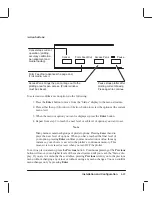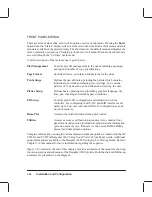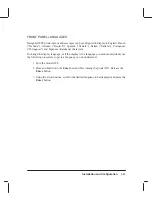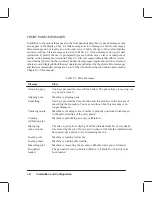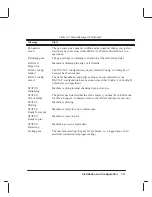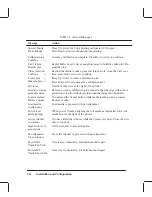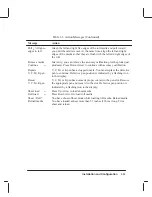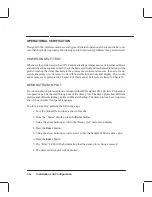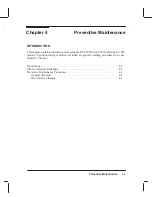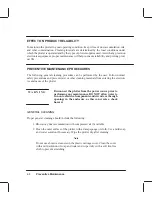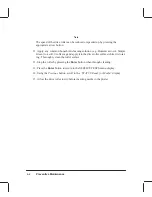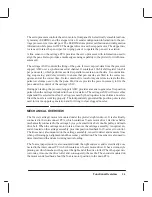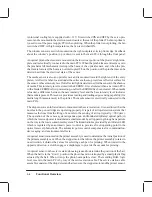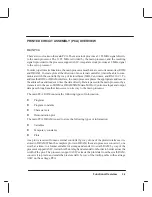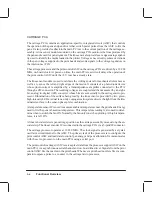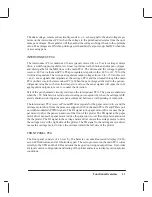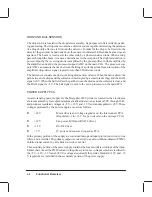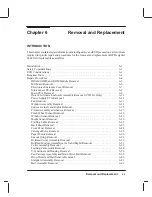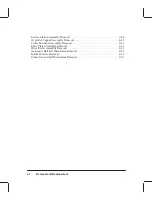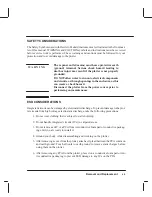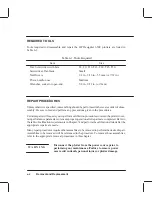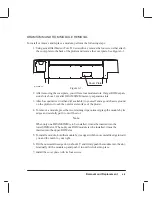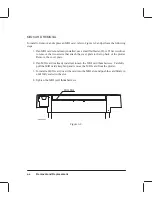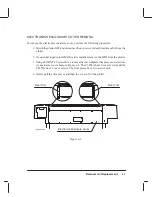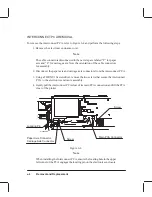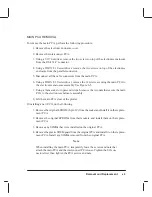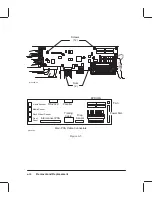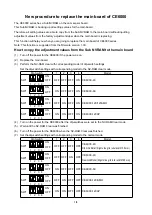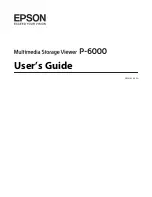
5-3
Functional Overview
The servo processor controls the servo motors, front panel, fan, electrically erasable read-on-
ly memory (EEROM), and the stepper drive. It sends configuration information to the car-
riage processor via its serial port. The EEROM stores plotter calibration and configuration
information while power is OFF. The stepper drive moves the stepper motor. The stepper mo-
tor is used to raise the pen wiper for wiping pens or to operate the pen service station.
A line sensor on the carriage PCA provides the servo processor with information used to
align the pens. It also provides a media edge sensing capability to the plotter (for width mea-
surement).
The carriage ASIC controls the firing of the pens. It receives pixel data from the processor
support ASIC over a synchronous serial channel. It contains a 100-bit shift register (one bit
per pen nozzle), which performs a serial-to-parallel conversion on the data. It contains tim-
ing, sequencing, and delay circuitry to ensure that pen nozzles are fired in the correct se-
quence and at the correct time. It also contains fire waveform generators to create the fire-
pulse waveforms used to fire the pens. Pen drivers provide the power necessary to fire the
pens under the control of the carriage ASIC.
During pen testing, the processor support ASIC provides a means to generate a fire position
pulse when the carriage is docked in the service station. The carriage ASIC will receive this
signal and fire selected nozzles. If a drop is sensed by the drop detector each time a nozzle is
fired, the nozzle is working properly. The independently generated fire position pulse is also
used for warm-up pulse generation and for firing to clear clogged nozzles.
MECHANICAL OVERVIEW
The Y-axis (carriage) motor is mounted under the plotter’s right endcover. It is electrically
connected to the interconnect PCA, which contains a Y-axis motor driver. Its drive shaft is
mechanically connected to the carriage by way of a small drive belt, double pulley, and main
drive belt. When the carriage motor rotates, it moves the carriage assembly. An optical en-
coder, located on the carriage assembly, provides position feedback for Y-axis servo control.
The line sensor, also mounted on the carriage assembly, is used to detect and measure lines
when performing pen alignment and the accuracy calibration. The line sensor is also used to
detect media width and skew during media loading.
The X-axis (paper) motor is also mounted under the right endcover and is electrically con-
nected to the interconnect PCA which contains an X-axis motor driver. It has a worm-style
pinion gear which meshes with a gear at the right end of the drive roller. When the paper mo-
tor rotates, it moves the drive roller and, consequently, the media. The encoder mounted on
the motor sends feedback about the X-axis motor position to the main PCA.
Summary of Contents for C2858A
Page 125: ...7 10 Adjustments Calibrations Notes ...
Page 155: ...9 4 Product History Notes ...
Page 164: ...10 9 Parts and Diagrams Illustrated Parts Breakdown C2859A Electronics Enclosure C C2858 3 1 ...
Page 166: ...10 11 Parts and Diagrams Illustrated Parts Breakdown C2858A Electronics Enclosure C C2858 4 1 ...
Page 182: ...10 27 Parts and Diagrams Illustrated Parts Breakdown Paper Drive Assemblies C C2858 12 1 ...
Page 198: ... ...

